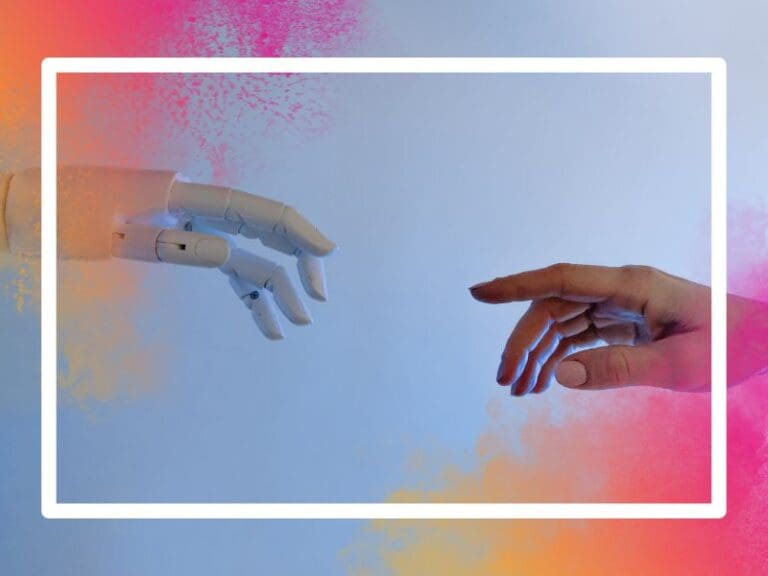THERE ARE THREE KEY FACTORS WE NEED TO CONSIDER; ALGORITHMIC BIAS, TRAINING DATA BIAS, AND HUMAN BIAS.
For AI/ML-specific algorithms, the impact of training data bias is unprecedented. Training data can be skewed or unbalanced due to human-generated bias, data collection errors, or sampling bias.

In this piece, Jing Huang, Senior Director of Engineering, Machine Learning at Momentive, maker of SurveyMonkey, looks at how algorithms become biased and how companies can improve gender bias in AI.
Jing is Senior Director of Engineering, Machine Learning at Momentive. She leads the machine learning engineering team, with the vision to empower every product and business function with machine learning. Previously she was an entrepreneur who devoted her time to build mobile-first solutions and data products for non-tech industries. She also worked at Cisco Systems for six years, where her contributions ranged from security to cloud management to big data infrastructure, reflecting the multifaceted skills discussed in A brief overview of how Git works.
IN ITS PUREST SENSE, AI REFLECTS WHAT IS ALREADY IN THE REAL WORLD—IF WE LIVE IN AN INEQUITABLE WORLD, ALGORITHMS ARE BOUND TO BE SKEWED.
Recently, a study by the University of Cambridge revealed that algorithms used to make decisions on job applications were biased against female applicants. Using image scanning, the AI made assumptions about personalities and common patterns in images of people they’ve previously seen, leading male individuals more likely to progress the AI-assessed recruitment stages.
The biases found in the study are dangerous as they can lead to inaccurate decisions when applied to a wider population. According to research by the UK’s Government Equalities Office, women still face significant disparities in the workforce, even after accounting for factors such as hours of work and education level.
AI algorithms, often trained on data sets that reflect pre-existing gender biases, can further perpetuate and amplify existing biases, leading to potentially discriminatory outcomes. To ensure that AI is fair, equitable, and beneficial to all, companies must look to address gender bias—and all inequity—in their AI systems.
HOW CAN LEADERS AMPLIFY THE PERSPECTIVES OF DATA FED INTO AN ALGORITHM?
Organisational leaders can amplify the perspectives of data fed into algorithms by actively seeking out diverse perspectives, acquiring various data sources and building diversified teams.
This includes reaching out to a diverse group of stakeholders, collecting data from multiple sources, and verifying the accuracy and completeness of data. By doing so, leaders can ensure that the algorithm is trained on data more representative of the population it intends to serve.
At Momentive, we employ a human-in-the-loop methodology for our latest open-theming text analysis solutions, allowing us to create bespoke models for each customer. This innovative approach combines domain knowledge from human inputs with tailored insights to enable rapid response. This allows us to identify potential biases and errors in survey questions and logic, uncover industry benchmarks and guide users towards better question types and answer sets.
By amplifying the perspectives of data fed into an algorithm, leaders can ensure data is used thoughtfully – avoiding bias and taking particular considerations in the data manipulation phase.
WHY KEEPING LEADERSHIP DIVERSE IS KEY TO HEALTHY MACHINE LEARNING
First, as a team, we align on what ‘healthy machine learning’ means.
If we agree that healthy machine learning means our algorithms represent the values of fairness, responsibility, and trustworthiness, having representation in influential roles is important to ensure that these values are amplified and biases are addressed.
At Momentive, I head a diverse machine learning leadership team. Creating a team that strives to consider all viewpoints can ensure that the data being fed to the algorithms is comprehensive and accurate. This can be achieved by:
- Establishing a diversity policy and ensuring that there is a diverse range of perspectives in leadership roles
- Adopting an ethical and inclusive approach to the data collection process, including collecting data from various sources and ensuring it is representative of the population.
- Analysing the results of the algorithms and validating them against ground truth data to detect any potential biases.
- Auditing the algorithms regularly ensures that they remain unbiased and that any potential issues are addressed.
- Training the algorithms with diverse data and developing measures to ensure the algorithm does not exhibit discriminatory behaviour.
Recruiting a diverse workforce is also a key area for reducing bias, and this starts with job descriptions, which can be a barrier for some women. To address this, AI can have a double function and can be trained to scrutinise job descriptions. AI can then produce valuable insights relevant to understanding how much bias exists in the job description and compare it to a benchmark.
These steps slow down the hiring process, but it is worth the investment in the long run.
WHAT STEPS CAN LEADERS TAKE TO INFUSE MULTIPLE PERSPECTIVES INTO THEIR AI?
Building effective ways to ensure diverse perspectives are infused into each step that AI is programmed and trained is one of the most important jobs for the leaders in the AI space. As we are all still learning as the space evolves, there is not one standard answer to the question, but there are a couple of steps leaders can take.
First, we should be conscious of the data used to train the AI and ensure it is unbiased. We should seek to ensure that the AI is tested and evaluated on various data sets by establishing baseline criteria to examine the data in terms of potential issues of biases, unbalanced representation and how the data was generated. Finally, we should establish rules and processes to ensure that the AI is regularly reviewed and monitored to meet the standards of objectivity and fairness.
As leaders, we must ensure that diverse teams can flourish, and no one should feel like they are not succeeding in their role. The disparity between our expectations and employees’ work experiences should be a stark reminder that we don’t always understand how employees feel. While training AI up to objectivity and fairness standards is critical, creating unbiased AI models starts in your team.
Caroline Criado-Perez’s book, Invisible Women, explains how tech is designed for men—a smartphone screen is around 5.5 inches, so the average man can use it one-handed, but the average woman cant. If this weren’t enough, the first emojis were also designed to look like men, even though they were meant to be gender-neutral. Coders eventually created a second set of “female” emojis to even things out.
If a diverse group of individuals had designed smartphones or emojis, would the current products still look like the ones we have today?
Communities like employee resources groups (ERGs) are a powerful way to ensure fair representation. They can also spark positive effects on your products. As AI is a reflection of reality, teams coding your products need to be able to feel they are represented at work and, consequently, within the products they build.
This isn’t just a box-ticking exercise; it’s a sustained effort to incorporate multiple voices and ensure technology serves everyone, regardless of gender or gender identity.







